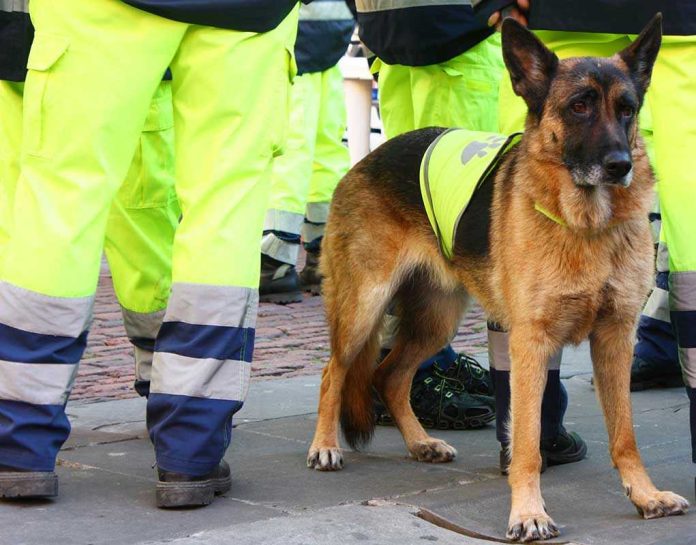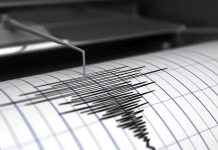
As floodwaters recede in Kerr County, an entirely different kind of disaster is playing out—locals and thrill-seekers flocking to the devastation for a glimpse, blocking rescue teams and making an already tragic situation even worse.
At a Glance
- Central Texas floods kill at least 118, with 95 confirmed in Kerr County alone and over 160 still missing.
- Rescue and recovery operations are being delayed by “sightseeing” residents and outsiders entering disaster zones.
- Officials plead with the public to stay clear, warning that debris piles may contain victims and require expert handling.
- Infrastructure damage and hazardous conditions leave first responders stretched thin, as non-essential travel compounds the crisis.
Sightseers Turn Tragedy into Chaos in Kerr County
What’s worse than a natural disaster? Apparently, a crowd of people who believe gawking at tragedy from their SUVs is a patriotic duty. In Kerr County, the deadliest freshwater flood in over a century hasn’t just left a scar on the landscape; it has exposed a chronic lack of common sense. Emergency crews, already battered by days of torrential rain and a death toll climbing past 95 in this county alone, are now forced to play traffic cop for rubberneckers who think public tragedy is a spectator sport. Sheriff Larry Leitha and his deputies have been blunt: stay out, or risk making an unbearable situation even more tragic. Yet, in an era when basic civic responsibility seems lost on too many, the pleas have fallen on deaf ears, with residents and out-of-towners clogging up disaster zones, disturbing debris piles, and hampering the very teams risking their lives to save others.
First responders are reporting that even with the Guadalupe River surging 26 feet in under an hour and bridges washed out, people are still finding ways to get dangerously close—blocking access roads, parking near debris fields, and, in some cases, climbing on unstable piles that may contain victims. It’s a level of selfishness and ignorance that would be laughable, if it weren’t so deadly serious. Instead of heeding calls to stay home and let professionals do their work, too many are treating disaster zones as the latest local attraction. There’s no shortage of heartbreak here, but the real insult comes from those who can’t grasp that some places are off limits for a reason.
Emergency Workers Battle Not Just Water, but Human Obstinance
While the aftermath of the July 2025 floods is still unfolding, with search and rescue teams working around the clock, their efforts are being undercut by those who simply refuse to listen. At least 161 people remain missing in Kerr County, many feared swept away or trapped beneath miles of debris. Every minute counts, yet time and resources are now being wasted on crowd control and rerouting non-essential vehicles. Fire, EMS, and search teams have repeatedly warned that debris piles are not just piles of trash—they may conceal the bodies of missing victims, or worse, collapse on curious onlookers. Still, the message isn’t getting through fast enough. Sheriff Leitha has practically begged the public: if you’re not part of the response, you’re part of the problem.
What’s astonishing is the speed with which people have abandoned any sense of collective responsibility. Instead of respecting the boundaries set by emergency managers, some are even posting photos on social media, further encouraging others to ignore official warnings. The reality is simple: every minute first responders spend managing sightseers is a minute stolen from search and recovery. In a disaster this scale, that’s not just inconvenient—it could be the difference between life and death. Perhaps if people spent less time chasing shock value and more time reflecting on what it means to be a member of a community, the recovery would go a whole lot smoother.
A Disaster Made Worse by Modern Distractions and Old-Fashioned Irresponsibility
The floods themselves are a textbook case of nature’s fury—fueled by a perfect storm of tropical moisture, drought-hardened soil, and the unique topography of the Texas Hill Country. But while the meteorological setup may be rare, the all-too-human impulse to ignore authority and indulge morbid curiosity is infuriatingly familiar. The result? Rescue and recovery operations delayed, evidence disturbed, and potentially, more lives lost. Officials are already facing the monumental task of identifying the dead, searching for the missing, and rebuilding shattered infrastructure. Yet, thanks to the infuriating persistence of sightseers, that task now comes with an extra layer of frustration and risk.
The long-term impact of this disaster will be measured not just in dollars or days, but in the scars left on a community forced to confront both nature’s wrath and its own inability to heed a simple call for cooperation. The message from authorities couldn’t be clearer: stay away, and let those trained to save lives do their jobs without interference. If this event teaches us anything, it’s that personal responsibility isn’t just a catchphrase—it’s a lifeline, especially when the stakes are this high.



